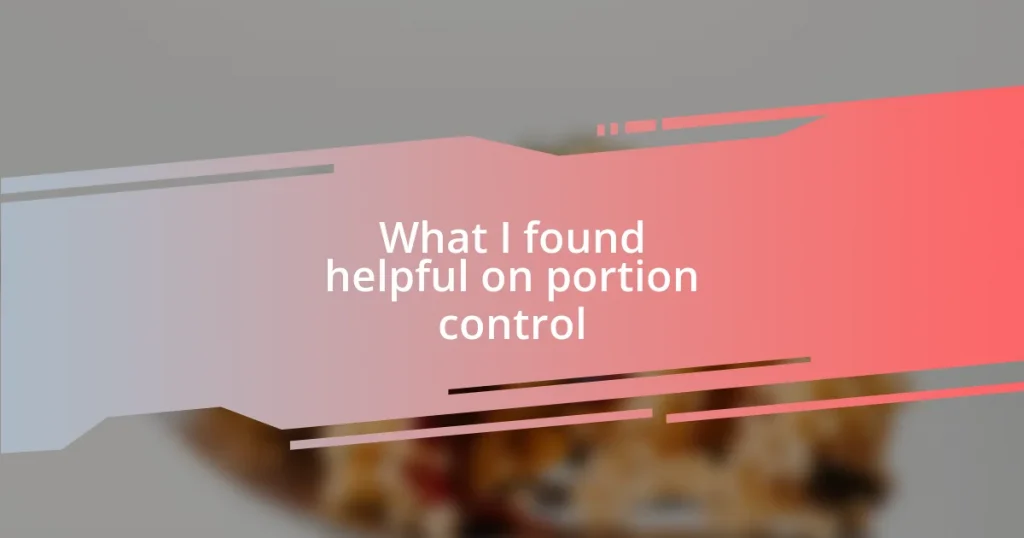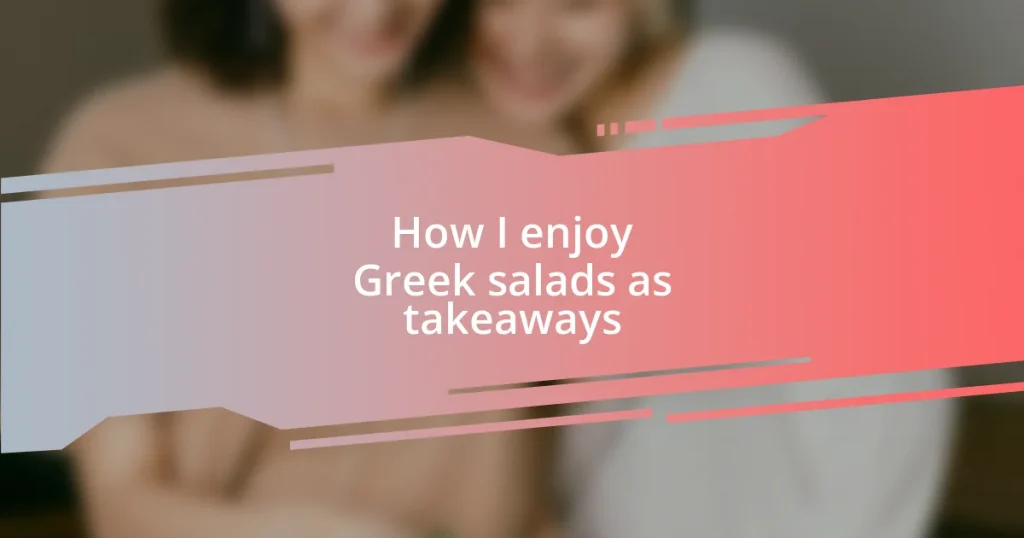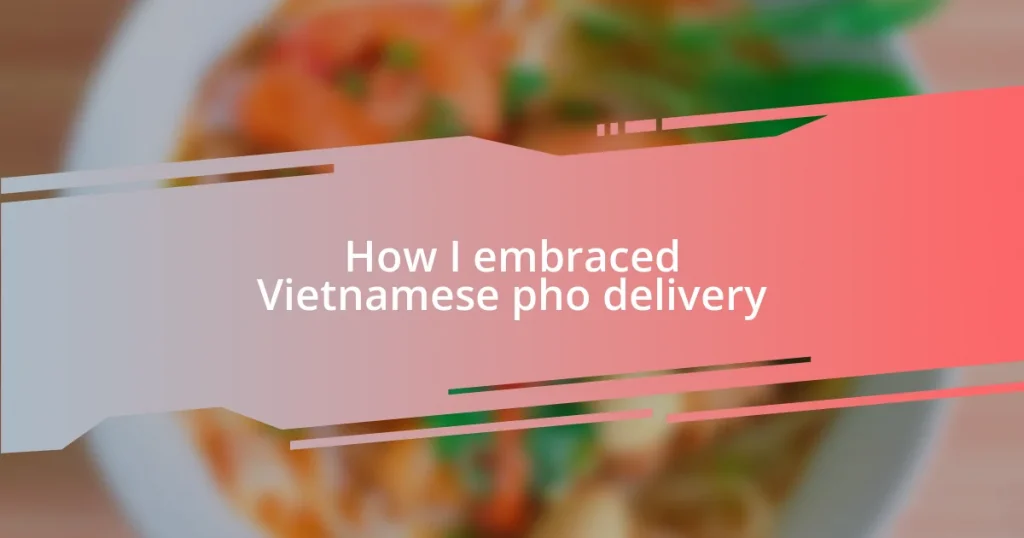Key takeaways:
- Understanding portion control involves visualizing serving sizes and distinguishing between hunger and cravings to make healthier choices.
- Practicing portion control promotes weight management, sustained energy, mindful eating, and healthier choices while reducing overeating.
- Utilizing techniques like smaller plates, pre-portioning snacks, and keeping a food diary helps establish effective portion control habits and fosters a healthier relationship with food.
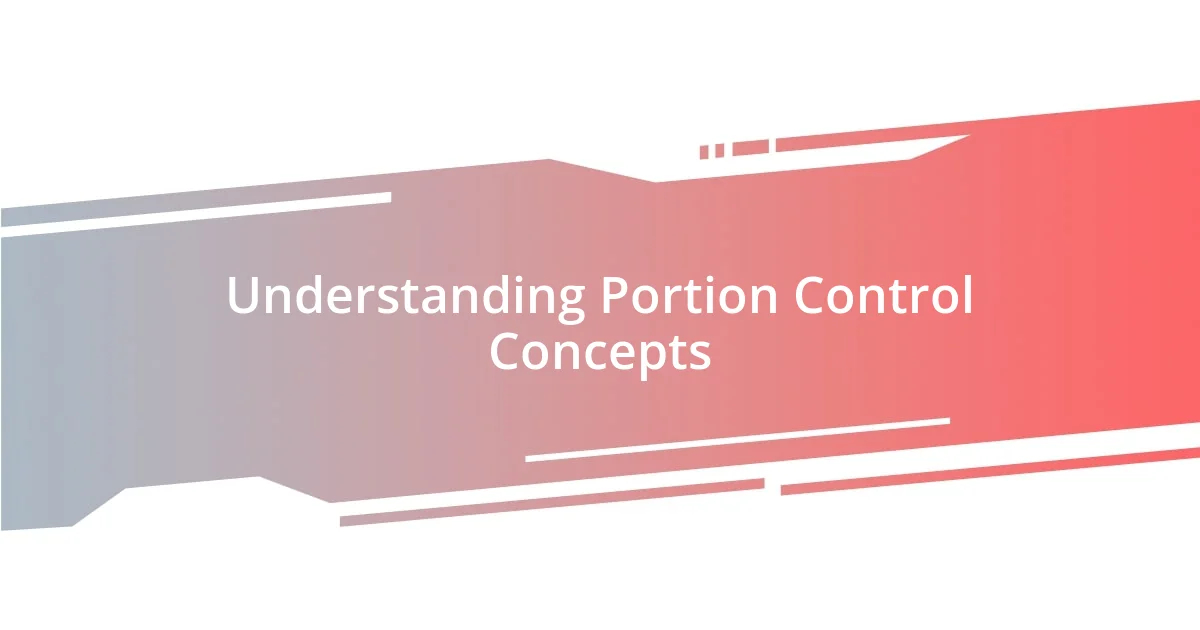
Understanding Portion Control Concepts
When it comes to portion control, understanding the basic concepts can truly reshape how we view our meals. I remember a time when I spent hours mindlessly eating snacks straight from the bag. That lack of awareness made it easy to consume far more than I needed. Have you ever noticed how tempting it is to eat just one more chip or cookie without even considering portion sizes? It highlights the importance of being mindful about what goes on our plates.
The notion of visualizing serving sizes can seem daunting, especially with today’s oversized portions everywhere. I found it incredibly useful to compare my meals to familiar objects—a baseball for a serving of protein or a tennis ball for a serving of starch. It’s a simple trick, but it makes portion sizes feel more manageable and less intimidating. Have you tried this? It can turn a vague idea of moderation into a clear, actionable plan.
Another helpful concept is the idea of distinguishing between hunger and cravings. I recall a day when I reached for dessert out of habit rather than hunger. Recognizing that difference has since empowered me to make healthier choices. Does that resonate with you? It’s astonishing how tuning into our bodies can transform our relationship with food and lead to better portion control.
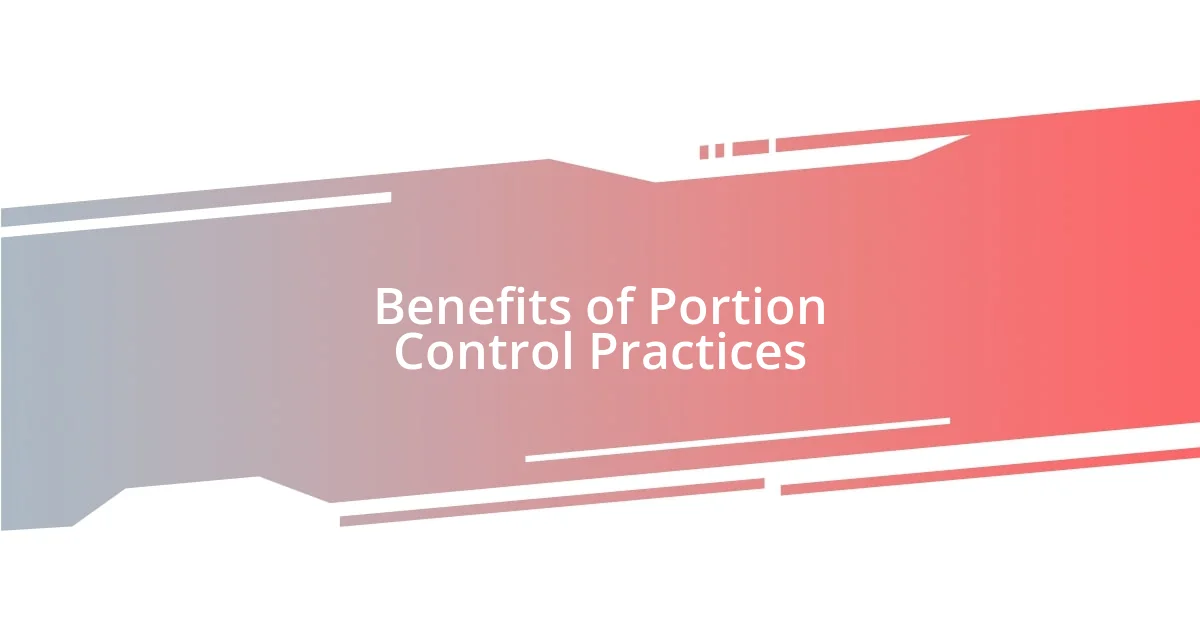
Benefits of Portion Control Practices
Practicing portion control brings several significant benefits that can positively impact your overall health. For me, one of the most noticeable outcomes has been the improved balance in my meals. When I consciously served myself just the right amount, I discovered that I felt satisfied without the uncomfortable heaviness that often followed larger servings. This newfound awareness shifted my approach to food—no longer was it about restricting, but rather, about enjoyment and moderation.
Here are some specific benefits of practicing portion control:
- Weight Management: Keeping portion sizes in check helps regulate calorie intake, making it easier to maintain a healthy weight.
- Sustained Energy: I often noticed that smaller, balanced portions helped me avoid energy crashes during the day, letting me feel more alert and focused.
- Mindful Eating: This practice encourages me to savor my food, which enhances the overall dining experience.
- Reduced Overeating: By controlling my portions, I’ve significantly lowered the instances of eating simply out of habit rather than true hunger.
- Healthier Choices: With portion control, I find myself making more intentional choices about what fills my plate, steering clear of empty-calorie foods.
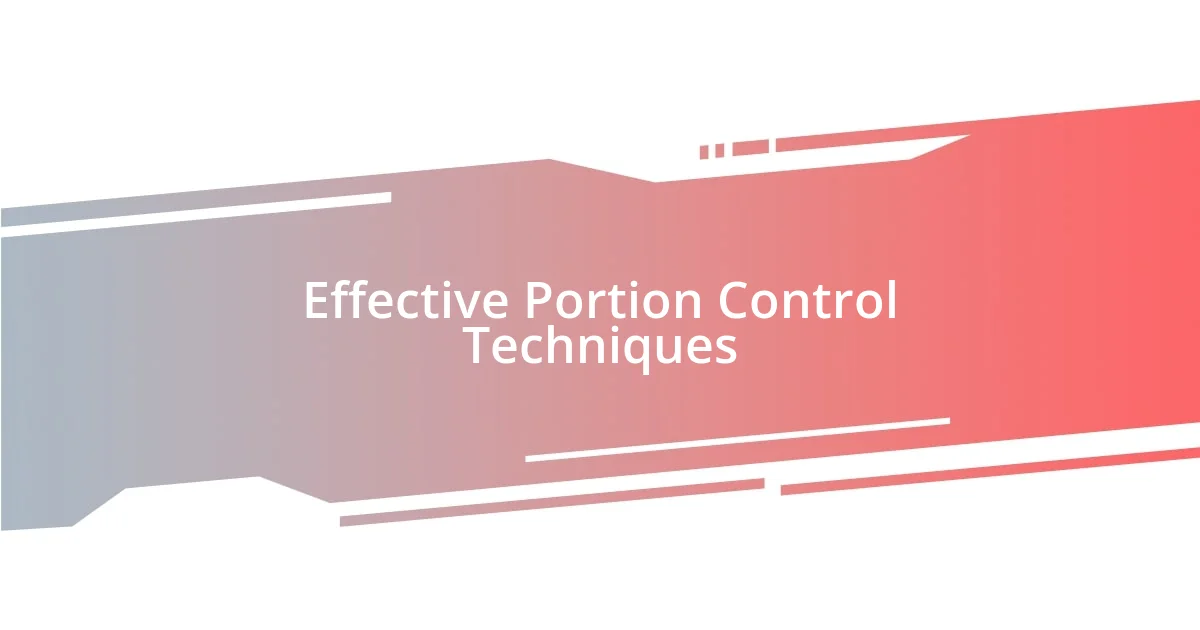
Effective Portion Control Techniques
In my journey towards effective portion control, I discovered that using smaller plates was a game-changer. I remember the first time I swapped my standard dinnerware for salad plates; it felt oddly empowering. When my meal looked abundant on a smaller surface, my mind perceived it as a generous serving, tricking me into feeling satisfied with less. Have you experienced that moment of surprise when you realize how a simple plate change can shift your mindset about portion sizes?
Another technique that resonated with me is pre-portioning snacks. Instead of reaching for a large bag of nuts, I now divvy them up into small containers. This simple act not only curbs the temptation to go overboard but also makes snacking feel more intentional and less haphazard. I remember one evening, placing pre-portioned bags in the pantry, and instantly feeling a sense of control—I wasn’t just mindlessly snacking anymore, but I was choosing exactly how much I consumed. Have you tried this approach? It’s like having a little victory every time you reach for a snack.
Lastly, I have found that keeping a food diary can work wonders. Each entry reminds me to think about what I consume and how it aligns with my portion goals. I recall jotting down my meals during a particularly busy week and realizing how many times I had eaten without truly noticing. The process became eye-opening, sparking a deeper awareness of what I was nourishing my body with. Have you ever reflected on your eating habits this way? It’s a simple practice, yet it fosters accountability and mindfulness, encouraging better choices.
| Technique | Description |
|---|---|
| Using Smaller Plates | Switching to smaller dinnerware makes portions appear larger, helping to control perceived serving size. |
| Pre-portioning Snacks | Dedicating time to separate snacks into small containers encourages mindful eating and prevents overeating. |
| Food Diary | Recording meals promotes awareness of consumption patterns and encourages healthier choices. |
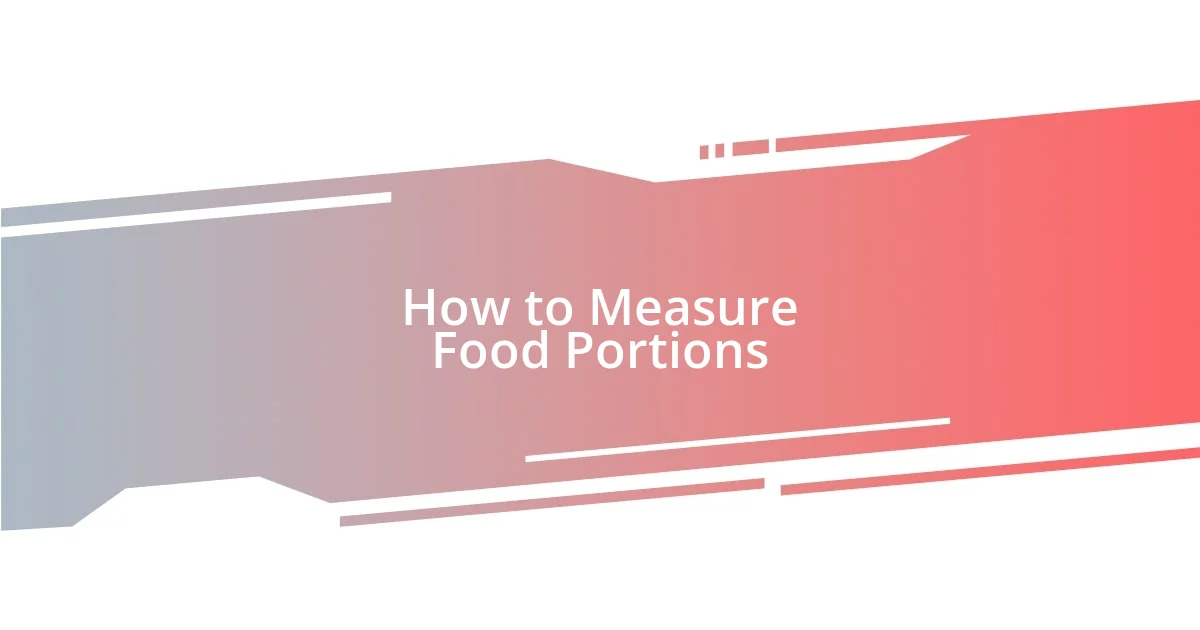
How to Measure Food Portions
Measuring food portions doesn’t have to be complicated. I’ve found that using measuring cups and spoons can be a straightforward way to gauge serving sizes accurately. When I first started this, I was surprised by how easily I could overestimate my servings, especially with foods like pasta or rice. Have you ever thought you were serving just a cup, only to find out it was closer to two? It really opened my eyes to the importance of measuring!
Another approach I practiced is visual portion size. I learned to associate different food items with familiar objects. For instance, a serving of fruit often looks like a baseball, while a piece of cheese can be the size of a matchbox. The first time I visualized my portions this way, it felt almost freeing—no more fussing with tools, just a quick glance to gauge what I’m eating. This method simplifies everything and makes it much easier to stay on track. Have you ever tried using visual cues instead of exact measurements? It can shift your entire perspective!
As I delved deeper into portion control, I started utilizing food scales, too. At first, I thought they were only meant for serious dieters, but it turns out they can be a valuable tool for anyone looking to be mindful. Weighing my food became a routine I surprisingly looked forward to—almost like a little challenge each meal. The more I weighed, the more I understood what actual portion sizes look like, which helped me build a more intuitive sense over time. How do you feel about weighing your food? It might just be the missing piece for creating a healthier relationship with your meals.
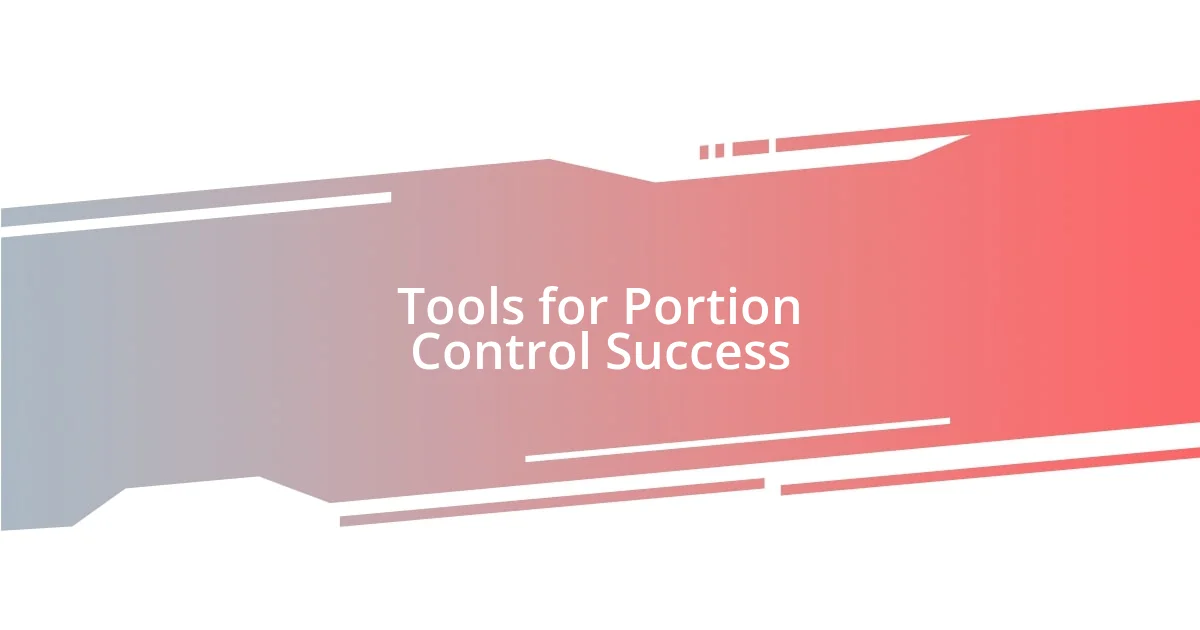
Tools for Portion Control Success
One tool that has truly transformed my portion control efforts is the use of visual portion guides, like portion control plates or bowls with built-in sections. I love how they take the guesswork out of serving sizes. The first time I used one, I was shocked to see how the simple layout made it easy to balance my meal. Instead of filling my plate haphazardly, each section guided me toward a colorful, nutritious meal. Have you ever considered how visual cues could change the way you plate your food?
I’ve also found that engaging in mindful eating with apps is a game changer. Certain apps allow you to log your meals and track your habits, which brings a new focus to what I eat. I remember the first week I used one—I was more aware of my choices and portion sizes than ever before. Seeing my progress and habits in real-time encouraged me to reflect on my food decisions, creating a rewarding sense of accountability. Have you thought about how technology could assist you in your portion control journey?
Lastly, my experience with portion control measuring tools has been enlightening. I invested in a few colorful measuring containers, and honestly, they brought a bit of fun into the process. I still recall my initial hesitation, thinking it would feel tedious, but every time I pull out those cups, I remind myself that I’m investing in my health. It feels satisfying to pour my food into the proper sizes and realize how much more I can enjoy my meals without overindulging. Have you tried using measuring tools? Their precision can make such a difference in achieving your portion control goals.
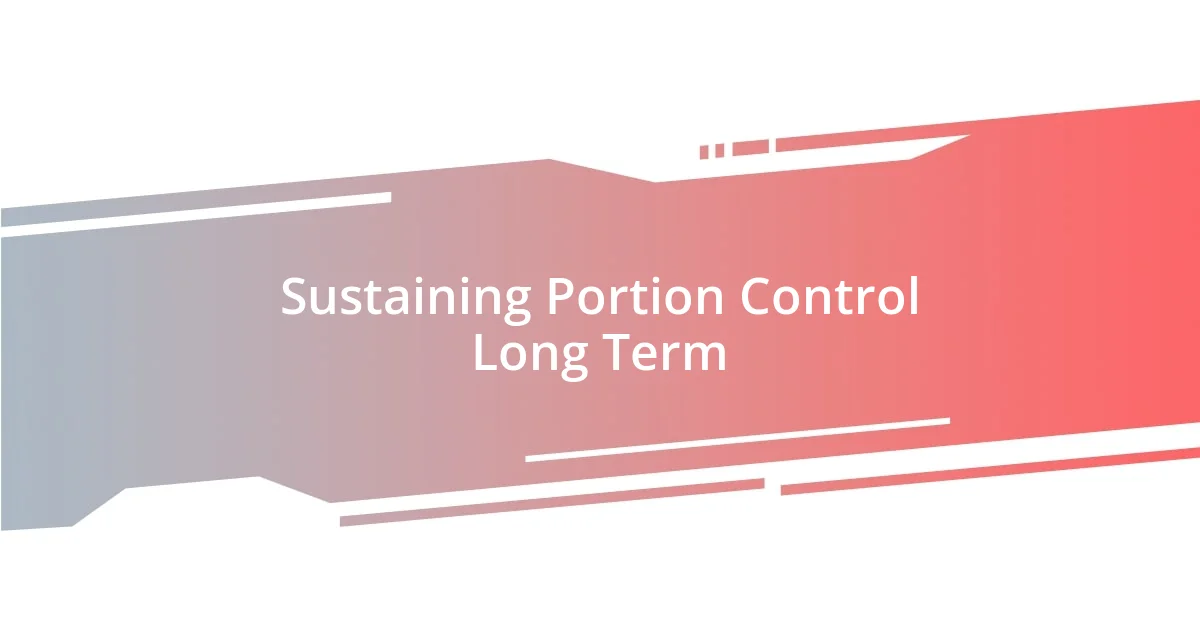
Sustaining Portion Control Long Term
Sustaining portion control long term requires a mindset shift that I’ve found incredibly valuable. It’s not just about restricting food; it’s about building a healthier relationship with it. I remember the moment it clicked for me—when I realized that enjoying my food doesn’t have to mean overloading my plate. Instead, savoring smaller portions allows me to appreciate flavors and textures, making each bite more satisfying. Have you ever noticed how much more you enjoy a meal when you’re not rushed or feeling stuffed?
Another practice that’s served me well is setting meal routines. Consistency helped me bake portion control into my daily life without even thinking about it. For instance, I always prep my lunches on Sundays, carefully scooping out portions so that I have a reliable reference throughout the week. It’s become a ritual that I genuinely look forward to, almost like meal prep meditation. Do you have a routine that helps you maintain portion control? Finding yours could make all the difference.
Lastly, surrounding myself with a supportive community has reinforced my commitment to portion control. Sharing my journey with friends and family invites accountability, and I’ve discovered how motivating it is to swap recipes and tips with those who understand what I’m trying to achieve. I’ll never forget the first time a friend noticed my portion sizes had changed; their encouragement reminded me that I’m not in this alone. Have you thought about who in your life could support you on this journey? Building that support system can be a game changer in sustaining your efforts long term.










